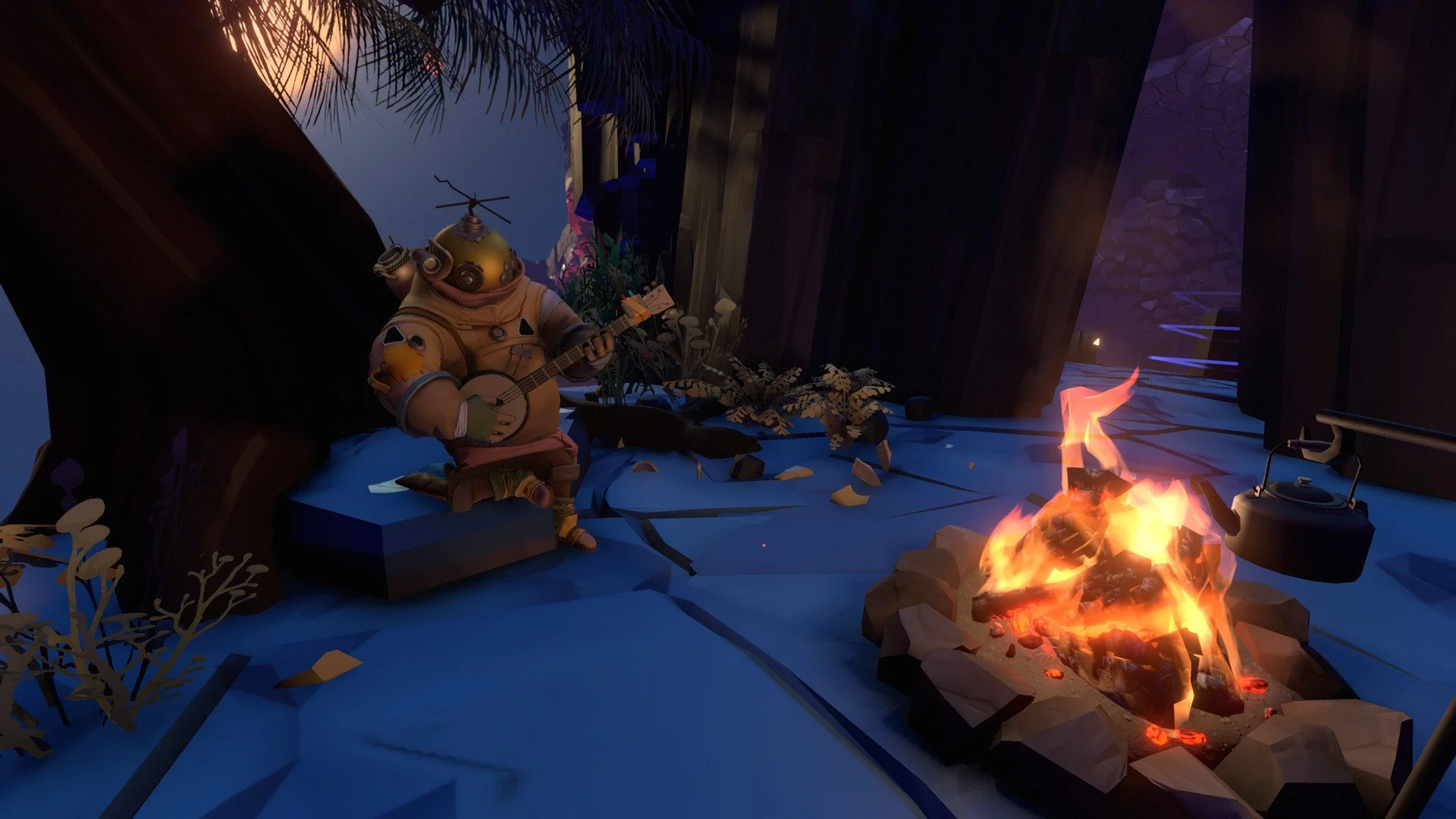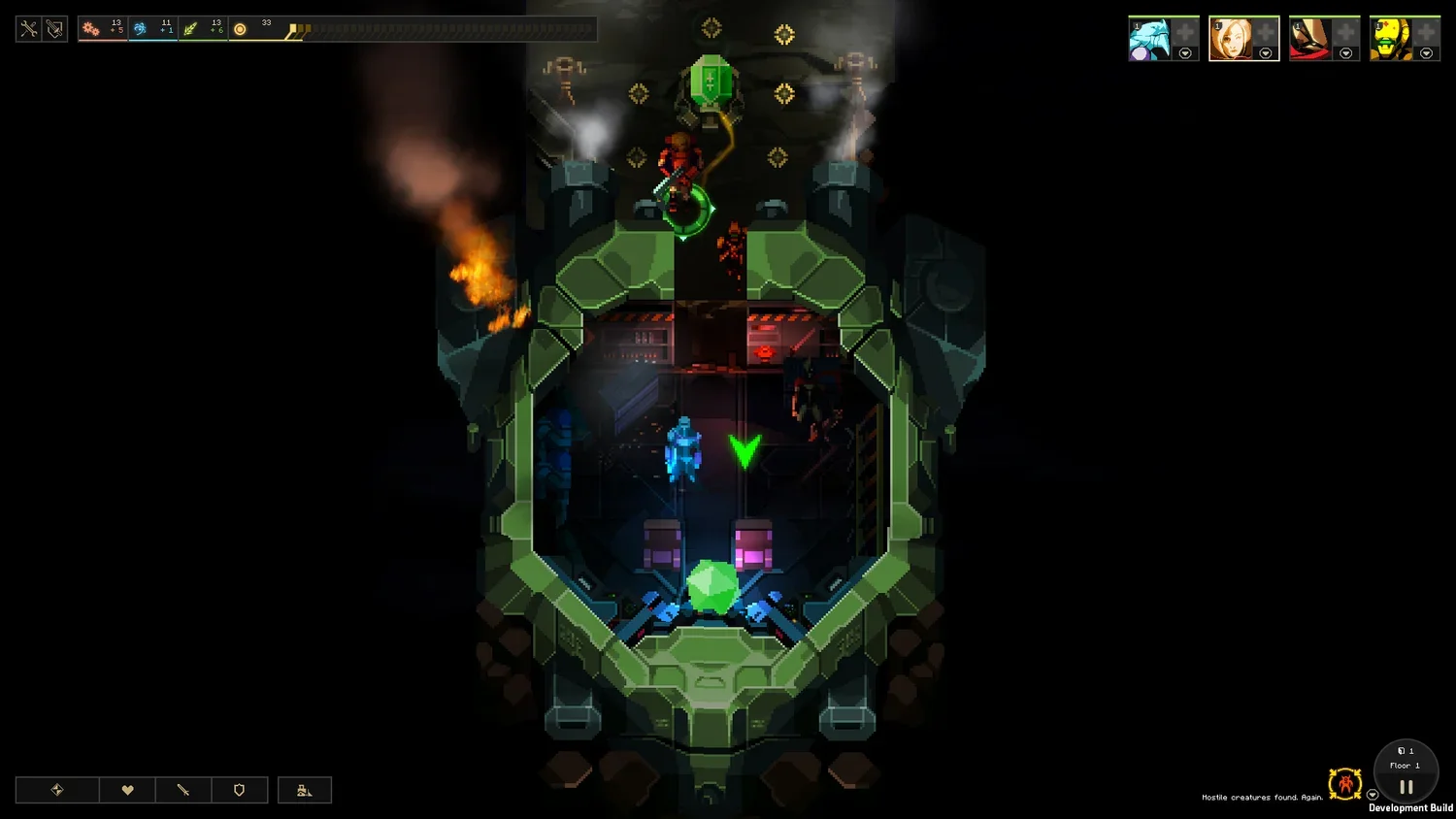
TIS-100 - Inaccessible, brilliant
TIS-100 by Zachtronics is one of the most challenging and intrinsically rewarding games I have played. It has a cool, vibey feel and is packed with brain teasers that will keep you staring at your computer screen for hours. It will have you pulling out paper, sketching flow charts, and working through simple programming puzzles.
Outer Wilds Critical Analysis: Coping with Cosmic Fears
Outer Wilds has a more to say than most games dare to. It's honestly a delight, once you reach the end of the game, to read the discussions of those who are trying to process the experience they just had.
Outer Wilds: The Detective Rogue-like
The Outer Wilds is a stunning and brilliant game. It has the spirit of a point-and-click puzzle game from ages past, all wrapped within the action-packed silliness of a modern survival game. It itches the side of the brain that relishes in discovery and problem solving.
FALLOUT 4: A Great Game, but Not a Great Fallout Game.
In the wake of an amazing year for RPGs, Fallout 4 has arrived. During the jarringly short time between its official announcement and release, an overwhelming amount of hype has built up around the potential heir to Skyrim. We’ll see if the game can live up to the expectation!
PREY: Polished and Pretty, but not Unique.
In the wake of an amazing year for RPGs, Fallout 4 has arrived. During the jarringly short time between its official announcement and release, an overwhelming amount of hype has built up around the potential heir to Skyrim. We’ll see if the game can live up to the expectation!
CRUSADER KINGS II: An Exploration Of What If Charisma Was The Only Stat?
Paradox Development Studio’s Crusader Kings II is perhaps 2nd only to dwarf fortress in terms of being unapproachable to newcomers and sheer scope of the game itself. I could probably condense my entire review into say: it's a game I loved so much, I had to quit playing it in college so I would actually study!
THE LONG DARK: Wonderful, Beautiful, and Dangerous.
The Long Dark has come a long way from my initial review, and I am overjoyed that it has maintained the spirit of loving nature and capturing the beauty of the far north throughout its development.
DUNGEON OF THE ENDLESS: Creative, Frustrating, and Addicting
My favorite rogue-like, RPG, strategy, tower defense, dungeon crawler! Its truly a gem of a game. It satisfies an itch for micro-management while also having smart enough AI that executing plans and battles never feels too frustrating. I find myself more angry with my own incompetence when trying to stand against the tide of foes, rather than any failings in the game systems themselves.
NORTH: A Heavy Story With Excellent Tone, but Inadequate Gameplay.
Outlands' NORTH has an interesting goal: to get across the emotion and confusion of a refugee in a strange land. The game gets its point across very quickly and that is to its credit. From its first moment, you feel like your in an alien world which constantly confounds and frustrates the player.
TACOMA: Stretching the Walking Simulator Formula in Beautiful Ways
An excellent story from the creators of Gone Home. It attempts and succeeds in innovating on the "walking simulator", introducing novel game mechanics and avoiding the predictability of tone and game play that has saturated the genre.
PLANET COASTER: A Glorious Return to Form for the Tycoon Genre!
Rollercoaster Tycoon was a game that became victim to it's own success. It's latest incarnation, Rollercoaster Tycoon World was set to be released on mobile devices and was doomed to fail. It left us wondering why don’t companies make reboots of old games actually worth playing?
Doki Doki Literature Club! Creepy and Thought Provoking
Team Salvato’s Doki Doki Literature Club! is perhaps one of the more curious horror games I’ve played recently. It’s in the vein of recent projects that are taking entrenched, often niche genres, and stretching them to create experiences that are truly unique. Doki Doki Literature Club!
Symmetry
Symmetry is the latest survival game to entice me with its pretty art style and allure of simulated suffering in a frozen wasteland. It has a unique charm and an intriguing story. Unfortunately, it is too short and lacks content. Forget the $11.99 price tag for a moment. Because, in terms of actual quality, it feels like the tutorial level of a much larger story.
It Lurks Below
You would not be faulted if you saw “It Lurks Below” and thought, “Oh, how nifty! Another 2d version of Minecraft in Early Access!” You wouldn’t technically be wrong, either. On the surface, it belongs in the pile of voxel-based survival games that make up a nice chunk of many of our steam libraries. However, its appearance conceals an amazing, creative, and innovative game. It might be the next game to absorb all your free time.
Avernum 3: Ruined World
Avernum 3: Ruined World recreates classic isometric RPGs, a la Fallout and Ultima. It’s incredibly fun, that is, as long as you’re a sucker for RPGs regardless of overall quality and polish, like me! While I enjoyed myself, I don’t think this game is anything special and feels like it’s selling itself purely on nostalgia.
Fade To Silence
Fade to Silence is an early access survival horror game that is fighting to stand out from the crowd. Its unique world entices you with a Lovecraftian hellscape frozen in a perpetual winter. I was initially pulled to the game by the focus on managing a village along with tower defense mechanics. All while exploring and maintaining the slate of usual needs: hunger, rest, and body temperature.
I Fell From Grace
I Fell from Grace is a 2D adventure game with one of the most fully realized branching stories that I’ve ever played. It presents a wealth of winding paths to be navigated by making meaningful and often disturbing choices. The narrative unfolds into a dark and pessimistic tragedy overrun with uncanny characters.
Kingdom Come: Deliverance
Kingdom Come: Deliverance is an Open World Survival Medieval Simulator Role Playing Game or OWSMSRPG. It’s fabulously detailed; filled with lush forests, quiet hamlets, and many NPCs for you to terrorize as you loot and pillage your way through the lovely Eastern European countryside.
Slumlord Simulator Review
Slumlord Simulator is the anti-Simcity. There are no sprawling metropolises and happiness meters here. Instead a cryptic red bar measures the growing anarchy in your tenements. All while a box displays a thesaurus worth of words to describe each new level of hatred your tenants feel towards you.




















